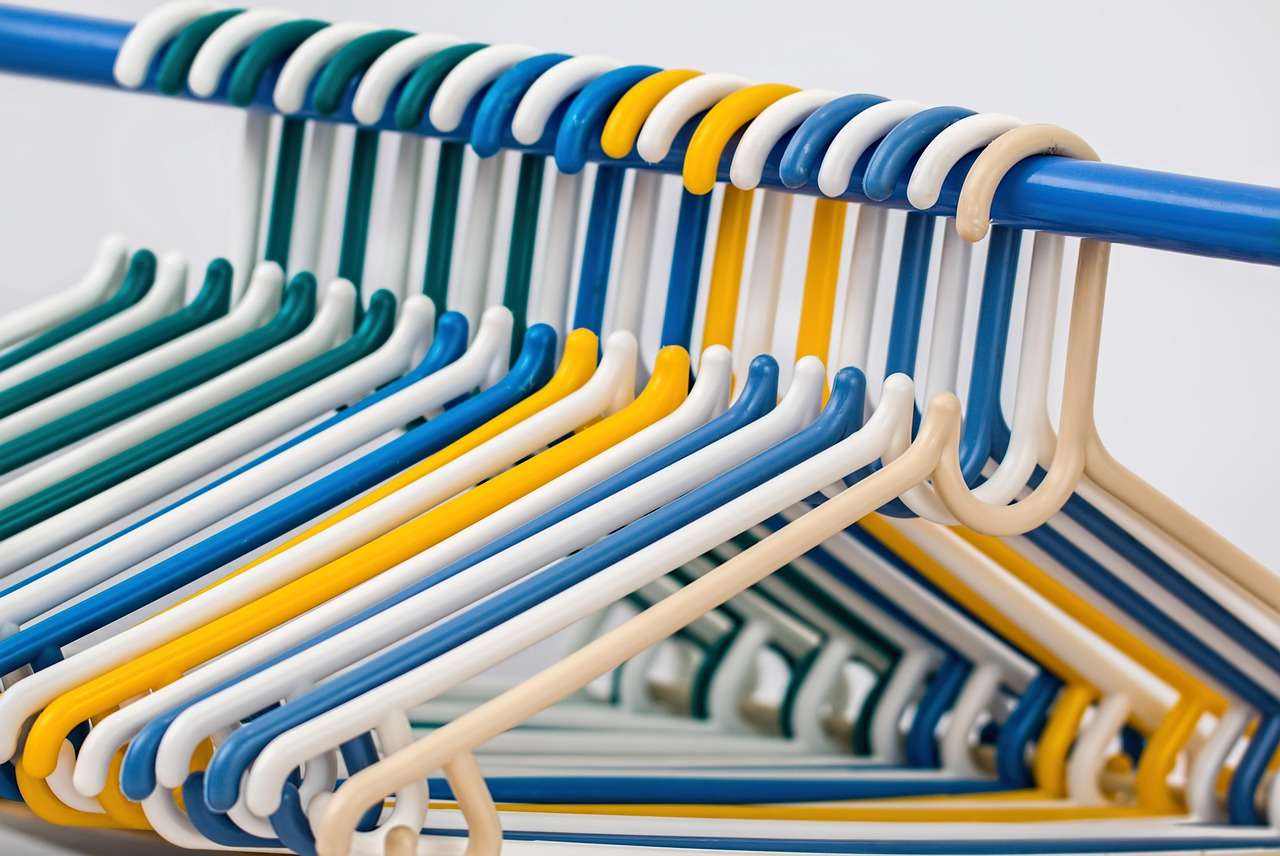Did you know that a recent study showed that parents spend an average of 2.5 hours per week just dealing with kids’ clothing clutter? It is a real struggle. Many parents I have spoken with feel overwhelmed by the sheer volume of clothes their children accumulate and the constant struggle to maintain order. I developed a straightforward strategy to organize kids clothes and transform their closets into manageable, functional spaces. I have seen this work for countless families, and I am eager to share these proven techniques with you.
Before you even think about organizing, declutter. Consider it like prepping a room before a big party: it sets the stage for success. Set aside an afternoon, put on some music that makes you happy and get ready to tackle the clothing mountain head on. A good decluttering session makes the actual organizing process much easier and more fulfilling.
Decluttering: Your First Step to Organized Kids Clothes
So, how do you declutter your kid’s closet in a way that actually makes a difference?
- Empty Everything: Take everything out of the closet and drawers. This gives you a clear view of what you are working with and allows for an unbiased assessment.
- Create Sorting Piles: Make three separate piles: Keep, Donate/Sell and Trash.
- Be Honest: This is where it can get tough. For each item, ask yourself these questions:
- Does it fit your child right now?
- Is it in good shape? (No stains, rips or tears)
- Has your child worn it in the last year?
- Do you (or your child) truly love it?
If the answer is no to any of those questions, put the item in the Donate/Sell or Trash pile. Letting go can be hard, especially with clothes that have sentimental value. Still, honesty is important. Keeping items that will not be used only makes the clutter worse.
Pro Tip: If your child is old enough, get them involved in the decluttering. This teaches them about letting go, making good choices and appreciating what they have. Make it fun: build a fort out of the clothes or put on a mini fashion show for items that are going to be donated.
Once you have decluttered, sort the clothes you are keeping. This lets you create a system that is tailored to your child’s needs and the space you have. Think about these categories:
- By Type: Group items by type, such as shirts, pants, dresses, skirts, sweaters and jackets.
- By Season: Divide clothes by season: Spring, Summer, Fall and Winter.
- By Outfit: Put together complete outfits to make mornings easier.
- By Activity: Have separate categories for school clothes, play clothes, dress clothes and sports uniforms.
Now, look at your closet space. What storage options are there? What extra storage might you need? Think about these ideas:
- Shelves: Great for folded clothes, shoes and accessories.
- Drawers: Great for underwear, socks and pajamas.
- Hanging Rods: Use for dresses, shirts, pants and jackets.
- Storage Bins and Baskets: Great for small items like hats, gloves and scarves.
- Over the Door Organizers: Make the most of vertical space.
Remember your child’s height when organizing. Put items they use often where they can reach them easily, and put less used items higher up. As your child grows, change the hanging rod. Think about a closet system that changes with your child to reduce the need to reorganize all the time.
Now that you have a plan, put it into action. Start by putting everything back into the closet, using your chosen categories and storage.
Here are some ways to make the most of space and keep things organized:
- Folding Skills: The KonMari method can help you use drawer space better and see everything more easily.
- Hang Clothes Well: Use hangers that are the right size and do not crowd the hanging rod.
- Use Dividers: Shelf and drawer dividers help keep things neat and stop clothes from falling over.
- Label Everything: Label bins, baskets and shelves clearly so your child knows where everything goes. A label maker looks nice, but handwritten labels work just as well.
- Use Vertical Space: Use stacking bins or shelves to make the most of the space.
True Story: I once helped a family with a really small closet by putting in a double hanging rod system, which doubled their hanging space. It made a huge difference.
Organizing is just the start. The real challenge is keeping things organized. The trick is to teach your child to put things away correctly, with clear rules and habits.
Tips for Keeping Kids Clothes Organized
To help your child keep their closet tidy, try these tips:
- Make it a Habit: Make putting away clothes part of their daily or weekly routine, like after bath time or on Saturday mornings.
- Make it Easy: Make sure the closet is easy for them to use by putting often used items where they can reach them easily.
- Show Them How: Show them how to fold and hang clothes correctly.
- Make it Fun: Turn putting away clothes into a game by playing music, setting a timer or giving small rewards.
- Be Patient: Children need time to learn good habits. Be patient and consistent and do not be upset by occasional setbacks.
A Real Example: I once helped a family create a “donation station” in their child’s closet: a bin for clothes that were too small or no longer worn. This made decluttering and donating easy and regular.
Children’s clothing needs change with the seasons, so do a seasonal switch at least twice a year. Store out of season clothes and bring out the ones for the current weather. This gives you another chance to declutter and see what your child needs for the coming season. To organize kids clothes well, remember to change with their needs.
How do you do a seasonal switch?
- Remove Out of Season Clothes: Take out all clothes that are not right for the current weather. For example, take out all summer clothes and store them away in the fall.
- Wash and Dry Before Storing: This stops mildew and bad smells.
- Use Airtight Containers: Store clothes in plastic bins or bags that seal well to keep them from dust, moisture and pests.
- Label Clearly: Label each container with what is inside and the size of the clothes.
- Store in a Cool, Dry Place: Good places include attics, basements or spare closets.
- Plan for the Next Season: Make a list of clothes your child will need for the coming season, like winter coats, boots or sweaters.
Practical Advice: I suggest making a checklist for each season to make sure you do not forget anything. This could include items like sunscreen, hats, gloves and scarves.
A child’s closet organization plan is ongoing, not a one time thing. As your child grows and their needs change, revisit your plan and make changes. I suggest doing this every year, or more often if needed.
When looking at your plan, think about:
- Is the plan still working for your child? Can they find and put away their clothes easily?
- Are there areas that are always messy? How can those areas be better?
- Has your child outgrown any clothes? Declutter and donate items that are too small.
- Should you change your storage methods? Do you need more shelves, drawers or hanging space?
Another True Story: I helped a family whose organized closet plan stopped working when their child became a teenager. The teenager needed more hanging space for their clothes and wanted a more grown up look. I helped them change the closet to fit their changing needs.
Sometimes, the closet is just not big enough. If you are struggling to keep your kids’ clothes organized, think about making changes to the closet itself. There are many options, from simple shelving to custom closet systems.
Think about these closet changes:
- Adjustable Shelving: Lets you change the height and layout of your shelves.
- Drawer Dividers: Help keep drawers organized and stop clothes from moving around.
- Additional Hanging Rods: Add more hanging space with a second rod or a pull down rod.
- Storage Bins: Use clear plastic bins to store out of season clothes or accessories.
- Closet Organizers: These systems have many storage options, like shelves, drawers and hanging rods.
Words of Wisdom: When choosing closet changes, think about your budget, space and your child’s needs. Measure your closet well and choose changes that fit correctly. Talking to a closet designer is often a good idea.
Do not forget the walls! Wall space is often not used but can be good for storing clothes. Add hooks, shelves or baskets to the walls to make the most of the space.
Here are some ideas for using wall space:
- Hooks: Hang coats, hats, scarves and backpacks.
- Shelves: Show books, toys and decorations.
- Baskets: Store small items like socks, underwear and accessories.
- Over the Door Organizers: Store shoes, toys or toiletries.
- Wall Mirrors: Make a dressing area.
Inspiration: I once saw a closet where the walls were painted with chalkboard paint, which let the child draw on their space. It was a fun way to use wall space.
While you may want to do all the organizing yourself, get your children involved. This will help them learn organization skills and feel like they own their space. Plus, they will be more likely to keep things organized.
Here are some ways to get your kids involved:
- Involve them in Decluttering: Ask them to help choose which clothes they want to keep and which they will donate.
- Engage them in Organizing: Ask them to help fold clothes, put away items and label containers.
- Offer Choices: Let them choose where they want to store items or how they want to organize their space.
- Make it Enjoyable: Turn organizing into a game or competition, with rewards for finishing tasks.
A Parenting Suggestion: Be patient and understanding. Children need time to learn organization skills. Do not expect them to be perfect and focus on their progress instead of small mistakes.
The last step is to keep your plan going. This means decluttering often, putting items in the right place and changing the plan as needed. Consistency is key to keeping a closet organized. With these tips, you can organize kids clothes well and keep a space that is not cluttered.
Here are some tips for keeping your plan going:
- Declutter Regularly: Set aside a few minutes each week to take out unwanted items.
- Put Things Away Properly: Make sure everyone knows where items go and puts them away after use.
- Adapt the Plan as Needed: Change the plan to fit changing needs as your child grows.
- Make it a Habit: Make organizing part of your daily or weekly routine.
Sustainable Change: By following these steps, you can make a closet that works well and looks good. Remember, organization is always changing, not a one time event. Be patient, stay consistent and enjoy the process.





